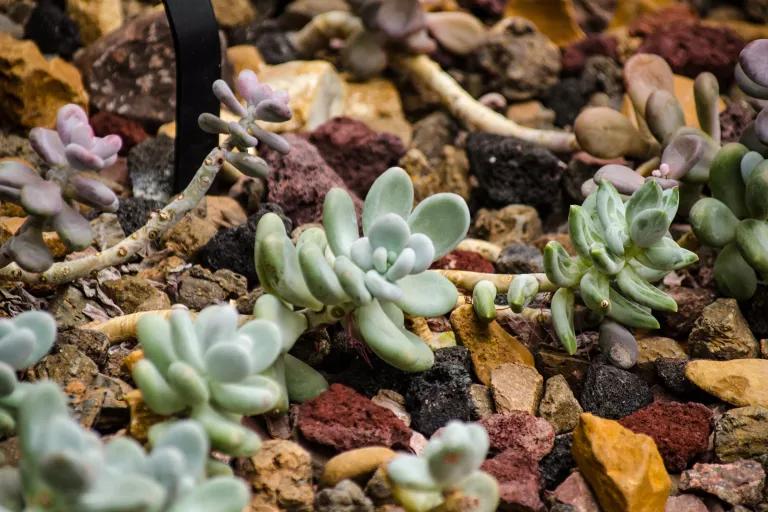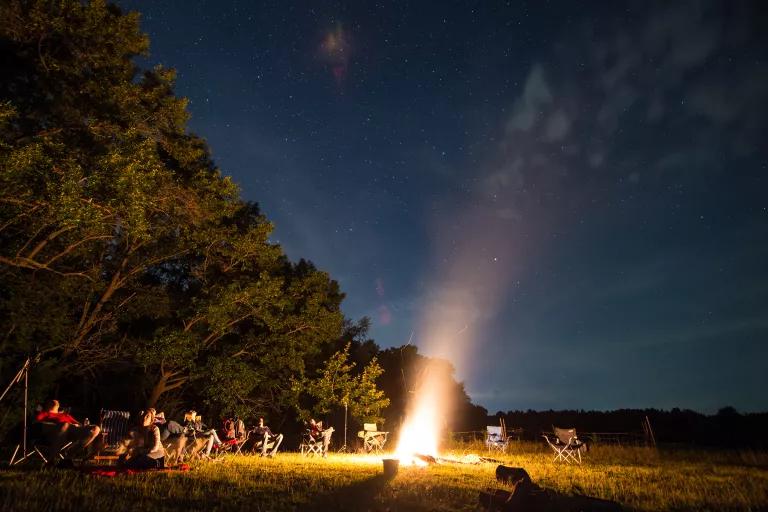How to Protect Your Property—and Our Planet—from Harmful Wildfire
Fire-wise tips for your home, your garden beds, the fence line, and that marshmallow roast you’re planning.

A house engulfed by flames as the Creek Fire burns in Los Angeles, December 2017
Ronen Tivony/NurPhoto/Getty Images
Wildfires can start in only one of two ways: by lightning or by people. A recent study found that 84 percent of them were caused by humans, and that people created an average of 40,000 wildfires per year across the country, many by accident.
“There are bad and good fires, from a human perspective,” says Thomas Swetnam, a professor emeritus of dendrochronology at the University of Arizona. “Although fire is a natural process that can clear out built-up fuel and promote regrowth of a forest, bad fires destroy human property, kill people, and damage ecosystems and watersheds.”
In light of recent worst-ever wildfire seasons in places like California, it’s more important than ever to learn to prevent the start—or spread—of destructive flames.
Protect your house.
Taking measures to make your home firesafe isn’t just for residents of rural communities or western states with routine fire seasons. It’s also not just for those who live in or near a forest, since some fires strike brush or grassland communities. “Wildfire can occur anywhere in the United States; it just takes the right conditions,” says Tom Welle, manager of the Denver field office of the National Fire Protection Association (NFPA) Wildfire Division. (It’s also not a phenomenon limited to North America.)
The walls and roof of your house are among the most important places to fireproof. If you’re renovating, replace single-pane windows with double-pane tempered glass and replace a wooden roof with one made of a fire-resistant material, such as slate, terra cotta, other types of tile, or standing-seam metal roofing. Routine roof hygiene is also important. “Keep it clear of debris,” Welle says, by regularly checking it and your gutters for leaves or pine needles, since the smallest materials can be the most flammable. You should do the same regular checks along fence lines and on patios and decks, too.
When homeowners in fire-prone areas don’t fireproof their homes, they and their neighbors can pay a high price. People say, ‘I’ve got insurance,’ Welle notes, “but then when their house burns, not only do they lose irreplaceable things, but they also lose a ton of time trying to get whole again.” (It’s worth noting that some fire insurance plans won’t cover homeowners who don’t take fire-wise measures.) More important, “people need to see that it’s their responsibility to reduce risk around their house however they can,” says Welle. “If it’s your private property, we need that desperately” in order to keep fires from growing out of control as well as to help firefighters do their job and stay safe.
Rethink your landscaping.
Simpler fire-safe changes include tackling the greenery on your property, particularly within five feet of your house. Trim back any tree branches that overhang that zone, and choose noncombustible plants when possible. If they’re appropriate for your area, succulents are perfect; they store water in their leaves and stems, and they don’t ignite when exposed to fire. (One San Diego resident reported after the 2007 Witch Creek Fire, “Succulents saved our home.”) Beyond high moisture content, look for plants that are compact, those with high soap content (e.g., soapweed yucca) or salt content (e.g., saltbush, crabapple), and those that are generally considered “drought-tolerant.” By contrast, grasses, as well as woody and twiggy plants, bushes, and small trees, tend to be highly flammable.

Succulent plants growing in a cultivated garden
Farther away from the house, separate your trees or bushes “into little clumps,” Welle says—the breaks in between can shut down the spread of fire. Ideally, trees 5 to 30 feet from your home would have 18 feet between their tops. In your garden beds, avoid highly flammable bark mulch; a better choice is gravel. For more ideas, check out these NFPA suggestions.
Remove fuel sources from around your home.
Rethinking what you keep on your outdoor property is a simple fire-wise fix. Don’t pile firewood close to the house, and if a blaze is imminent, move all vehicles away (their fuel is combustible). Deck furniture (including chair cushions), a patio umbrella, and even your welcome mat can catch embers and help fire spread, so stash them away.
Consult local experts for help.
If fireproofing your home seems overwhelming, you don’t have to go it alone. “Many local fire departments do great work helping homeowners achieve these goals for their houses,” says NRDC policy advocate Amy Mall, who coauthored a 2007 report on community fire-wise measures and the failure of federal fire policies to protect communities. Depending on where you live, the Firewise USA program (an NFPA initiative that encourages communities to work together on wildfire preparation, prevention, and recovery) may have a local liaison, or there may be a state forestry representative or a wildfire mitigation specialist who will visit your home and recommend changes. You can also look for community resources to do the heavy lifting. “Older folks may want to reach out to a local Scout troop or faith-based group,” Welle says. It’s often in the community’s best interest to help residents make their individual properties less fire-prone. After all, Welle adds, “with denser development, one neighbor’s safety may depend on work the other neighbor did.”
Keep campfires under control.
Unattended campfires can cause accidental blazes. To ensure yours doesn’t destroy forestland, “first, make sure it’s legal,” says New Hampshire state forester Brad Simpkins. “In some states, you need a permit to have one—the purpose is to require people to have contact with the local fire official, who can tell them if it’s safe or not that day.” On a very dry day, he notes, there may be a burn ban in place. If fires are permitted, build yours on bare mineral soil and well away from grass, weeds, and overhanging branches, and surround it with a ring of fire-resistant material such as rocks. And for as long as it’s burning, keep an eye on it. Simpkins highlights the importance of properly extinguishing a campfire, too. “Put it out completely,” he says. “Drown the fire with water, then stir it with a stick. Give it a few minutes, then hold your hand over it—if it’s still hot, there are still dangerous embers, so you need to drown it again.” (Good old Smokey Bear offers even more tips.)

People sitting around a campfire in a forest
Think twice about outdoor activities in dry weather.
Sparks can fly from surprising sources. “Debris burning is a common cause of wildfires, as are fireworks and children playing with matches, if it’s dry and windy,” says Simpkins. Vehicles can also cause unexpected flames, Welle adds. “Safety chains when you’re towing can create sparks, as can catalytic converters—if you’re four-wheeling in brush, the heat can cause ignition,” he says. “And if you’re mowing the lawn and hit a rock, it can spark.”
Propane barbecue grills are generally safe, says Simpkins, as are charcoal ones; wood-burning grills may produce embers, so keep a close eye when using them. A gust of wind across a backyard fire pit can shift embers; when nearby grass is dry, that can ignite a fire. In dry weather or drought conditions, these fire risks are even more hazardous. It’s never a bad idea to check with your local fire officials when planning a cookout, a marshmallow roast, or any other sort of alfresco event that involves setting a blaze.
This NRDC.org story is available for online republication by news media outlets or nonprofits under these conditions: The writer(s) must be credited with a byline; you must note prominently that the story was originally published by NRDC.org and link to the original; the story cannot be edited (beyond simple things such as grammar); you can’t resell the story in any form or grant republishing rights to other outlets; you can’t republish our material wholesale or automatically—you need to select stories individually; you can’t republish the photos or graphics on our site without specific permission; you should drop us a note to let us know when you’ve used one of our stories.
How to Make a Wildfire Evacuation Plan
In Planning for Climate Change, Native Americans Draw on the Past
How to Stay Safe From Wildfire Smoke